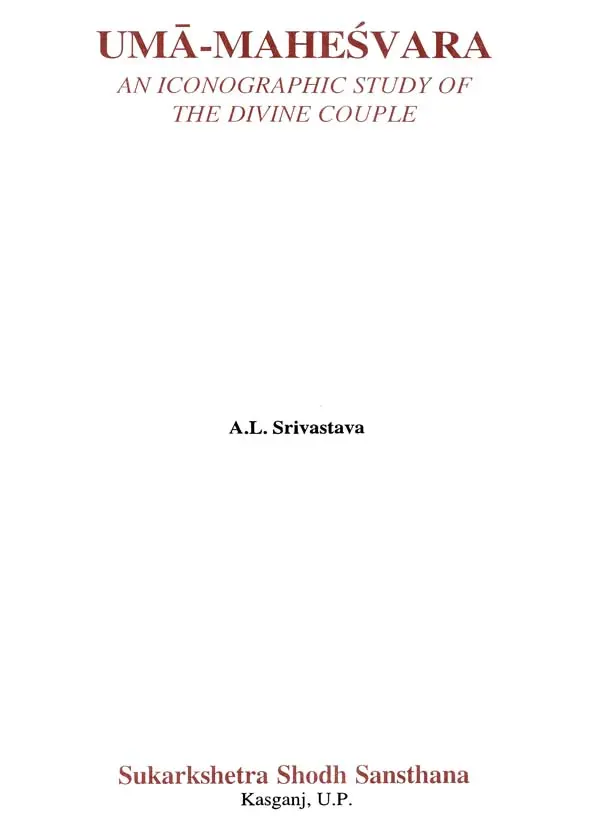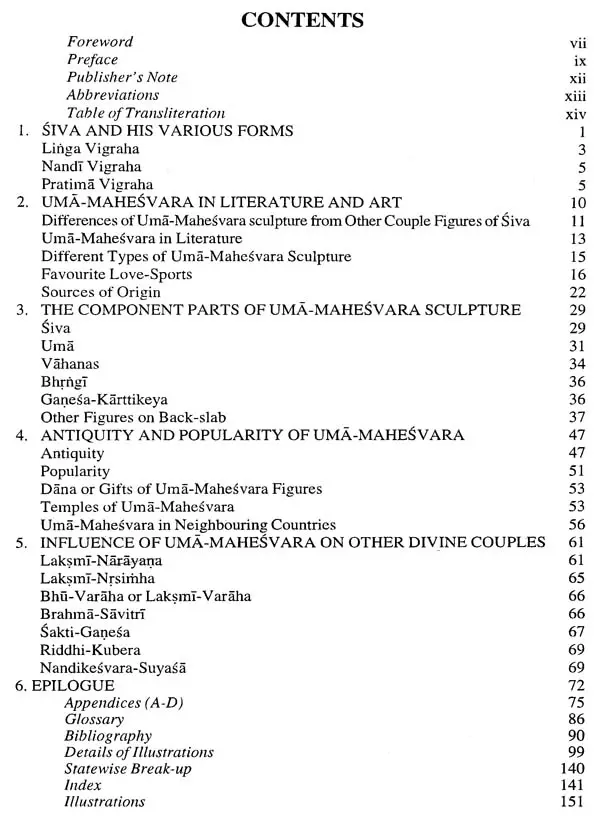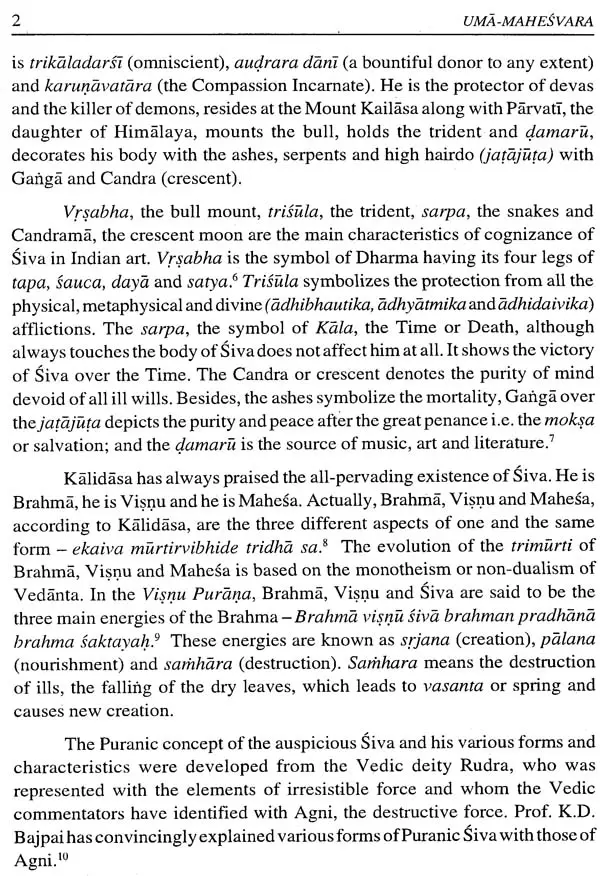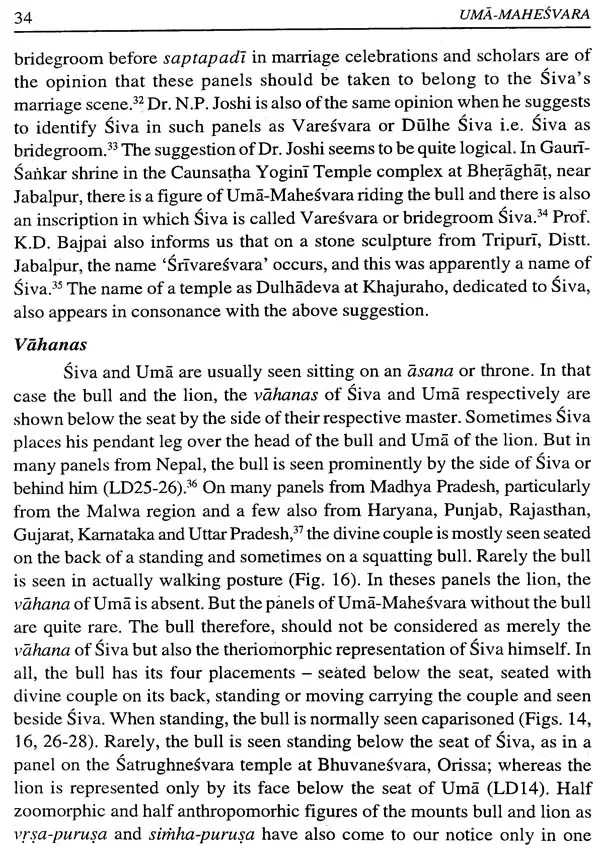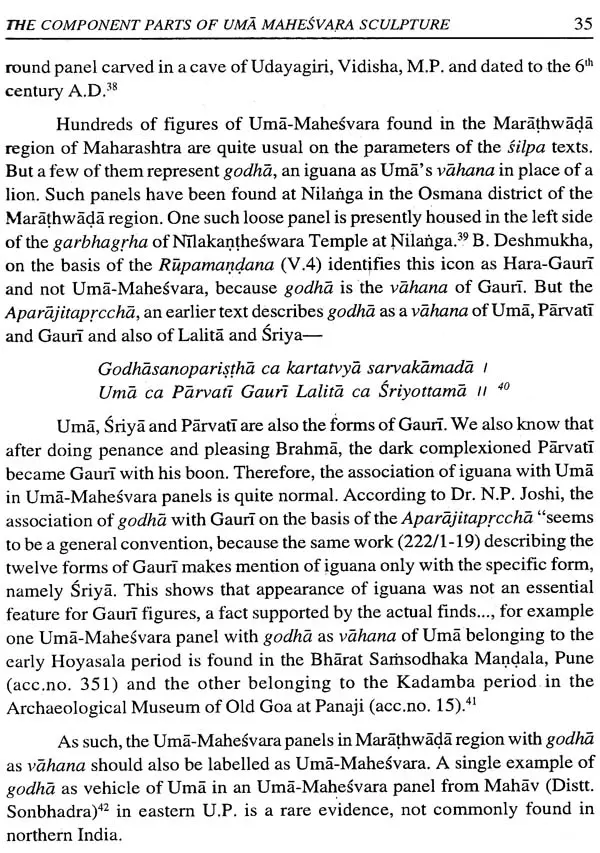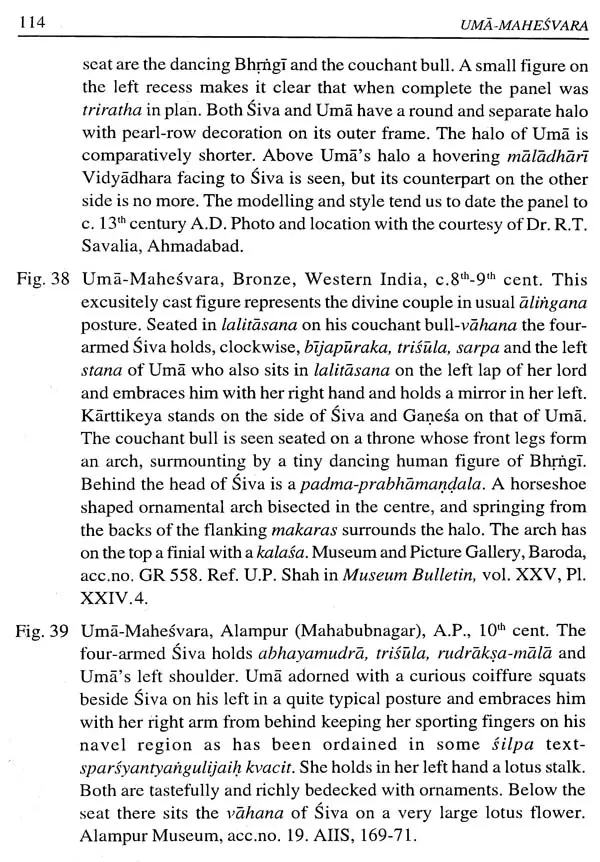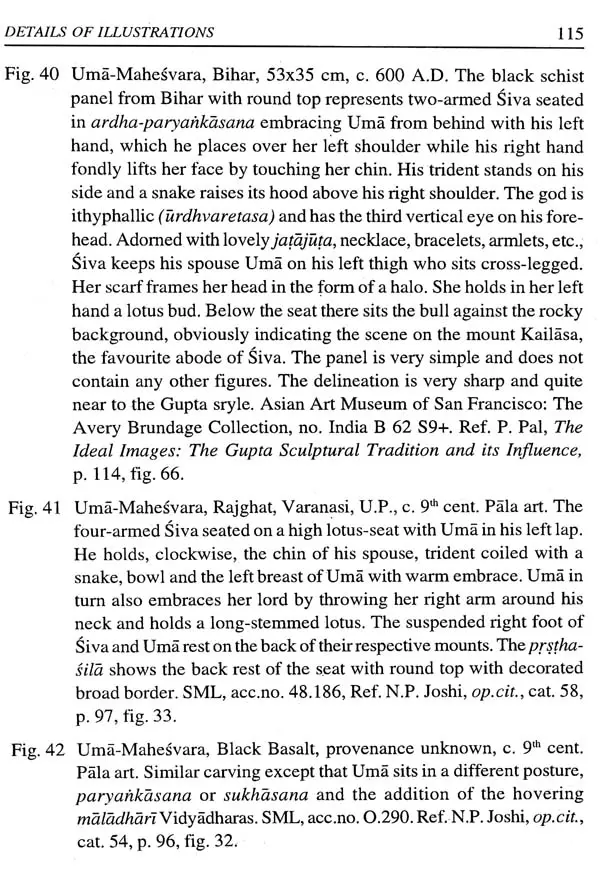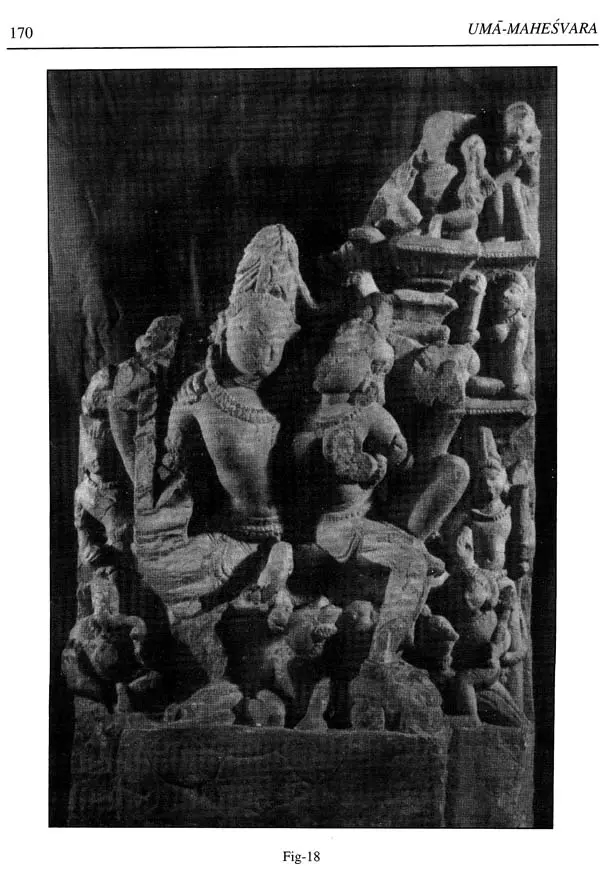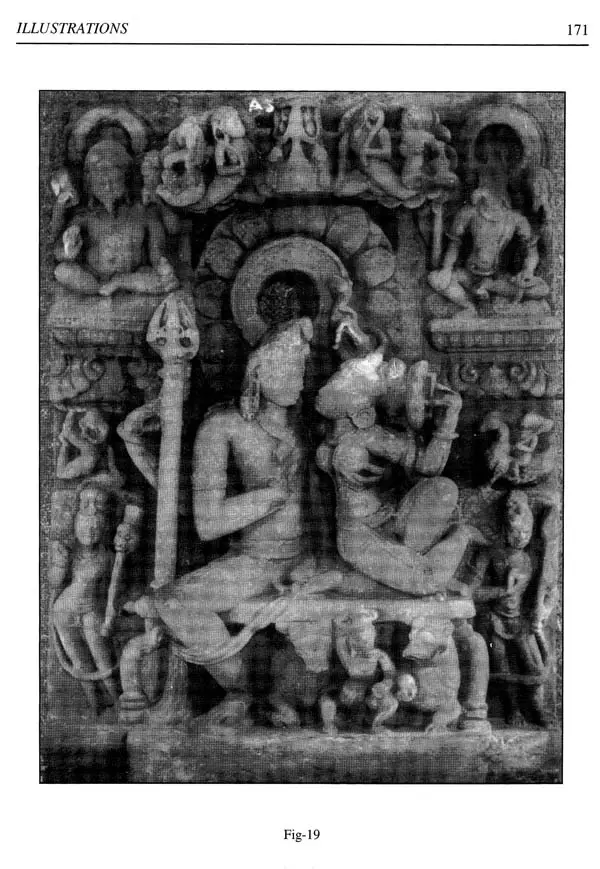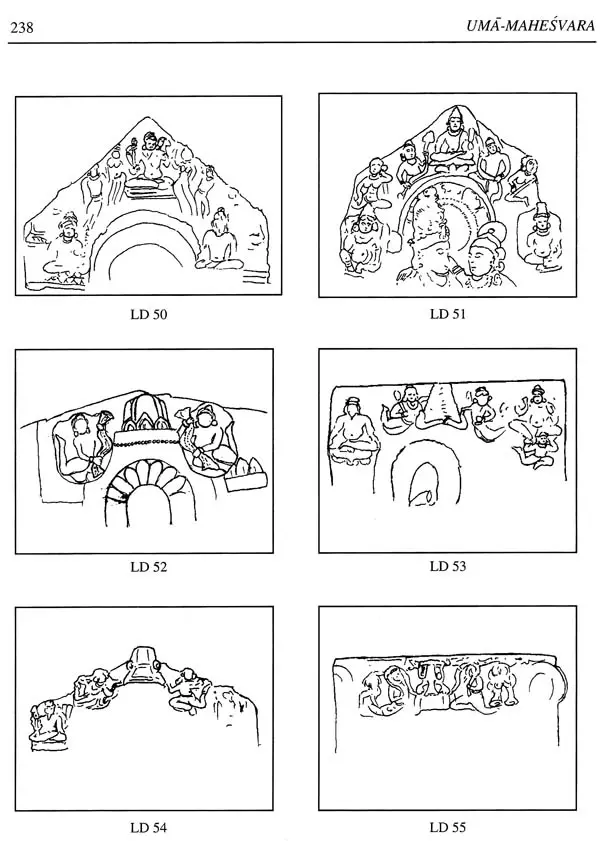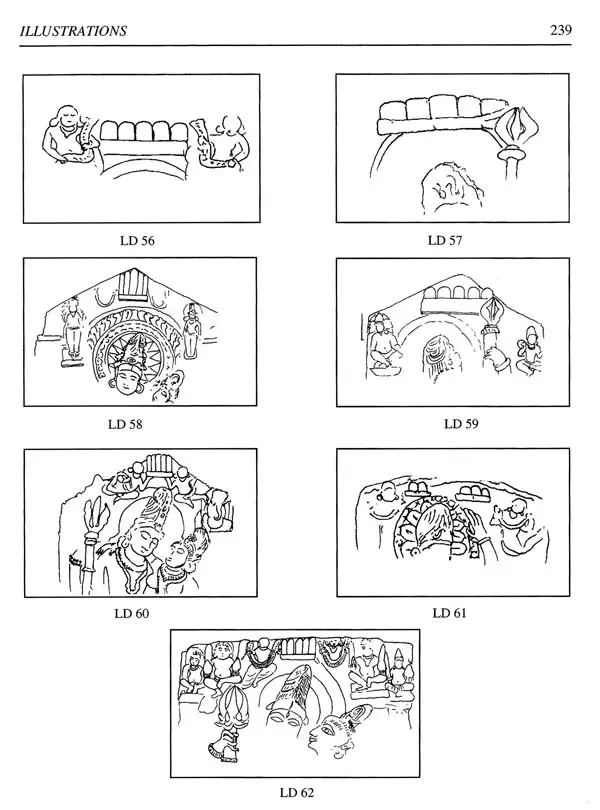
Uma-Mahesvara (An Iconographic Study of the Divine Couple)
Book Specification
| Item Code: | UAH474 |
| Author: | A. L. Srivastava |
| Publisher: | Sukarkshetra Shodh Sansthan, Kasganj |
| Language: | English |
| Edition: | 2004 |
| Pages: | 240 (Throughout B/W Illustrations) |
| Cover: | HARDCOVER |
| Other Details | 11.00 X 8.00 inch |
| Weight | 1.15 kg |
Book Description
The form of Uma-Mahesvara pulsating with human emotions was so fascinating that some other gods namely Visnu, Brahma, Ganesa, Kubera, Nandikegvara etc. were also represented in similar charming and embracing posture. This lovely form of Uma-Mahesvara also travelled in some neighbouring countries.
This discussion on Uma-Mahesvara sculpture has been substantiated by sixty-two halftone and sixty-four line-drawing illustrations. Details of illustrations, Bibliography, Glossary of Sanskrit words, Appendices (A-C) for Sanskrit quotations in Devanagari script with English translation and index have been appended. A chart showing state wise salient features and regional variations in Uma-Mahesvara sculptures at a glance is also attached at the end as Appendix D.
Dr. Srivastava special field of study has been the auspicious art symbols like Svastika, Srivatsa, Nandyavarta, Palcahgulanka, Savatsago, etc. He has not only delivered series of lectures on these symbols in many reputed institutions and art centres but also produced books on them. Two of his books, Srivatsa and Bharatiya Kala-Pratika have been awarded.
More than twenty books on Indian art and symbols to his credit include: Life in Sanchi Sculpture (1983), Srivatsa :An Auspicious Symbol (1983), Bharatiya Kala (1988), Bharatiya Kala-Pratika (1989), Silpa-S'ri: Studies in Indian Art & Culture (1990), Nandyavarta : An Auspicious Symbol in Indian Art (1991), Pracina Bharatiya Deva-Martiyan (1998), Mahgalika Pratika (1999), Bharatiya Kala-Sampada (2001), Panchala Sculpture (2002) and Bharatiya Samskrti our Silpa (2003).
His Keen interest in the field of research enabled him to be invited by the Canadian Asian Studies Association, Ottawa to present his paper on an ancient art symbol Nandyavarta to the annual conference of the Learned Societies of Canada, held at the University of Montreal in June 1985, which later published in their Journal South Asian Horizon, Vol.4,1986.
Dr. Srivastava has been contributing regularly his research papers to the annual sessions of many academic bodies. Besides being a Life Member of some societies, namely the Indian Art History Congress, Guwahati, Panchala Research Institute, Kanpur and the Numismatic Society of India, B.H.U., Varanasi, Dr. Srivastava has also edited the research journals Kai-a (IAHC.Vols.I and II) and Patichala (Parichftla Research Institute, Vols. V to XI).
Credit goes to Dr. Srivastava for discovering a rare silver coin of the `Chandragupta Kumaradevi Type' and some rock paintings in the hills of Sanchi-Kanakhera and Nagori, District Raisen, M.P. (Prachya Pratibha, Bhopal, Vol. IV, No. 1).
Presently Dr. Srivastava is the President of the Panchala Research Institute, Kanpur.
The present work on Uma-Mahesvara is a fresh addition to what Dr. Srivastava has already produced. General work on Hindu Iconography can never do full justice to individual deities of major or minor importance, specially to their respective forms current in different pockets of the country. This is truer in case of mediaeval sculptures; say those ranging between c.7th to le" centuries A.D.
Like Visnu, Siva too commanded popularity right from early times and is still worshipped under various names and forms. Uma-Mahesvara that is diva and his consort Parvati is one of the common benign forms of the god. Dr. Srivastava has studied this form in all its aspects. Even some parallel foam of some other deities have not escaped his notice. In his presentation Ube author has not only discussed several concerned sculptures from distant corners of India, but also has freely and copiously used related literary data collected from the religious and secular works. This has undoubtedly given rational colour to the iconographic discussion of the images.
Book's Contents and Sample Pages
